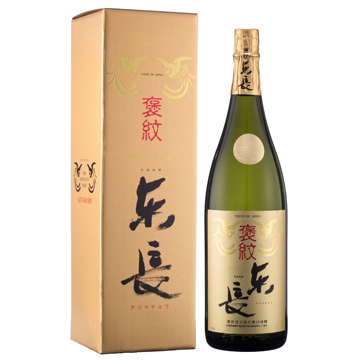Houmon Azumacho

| Volume | Retail Price |
|---|---|
| 1,800ml(with a gift box) | 6,600 yen |
| 720ml(with a gift box) | 3,300 yen |
Houmon Azumacho
Quality Characteristic
Junmai Daiginjoshu
Alcohol Content
16 degree
SMV(Sake meters value)
-4
Acid
1.8
Amino Acid
1.2
Raw Material rice
Yamada-nishiki
Rice Polishing rate
48%
Yeast
Saga Yeast F7
Brewing methods
3 step Preparation
Sake Lee Rate
40.4
Raw Sake Alcohol
16.8
Sake Conversion Rate
334.6 L/T
characteristic
Sake made with Yamada-nishiki produced by local farmers in Saga. The rice is carefully polished to 48% and only Saga yeast is used for the sake. Junmai Dai-ginjo, characterized by the alcohol content -4, which cannot be copied by other companies.
